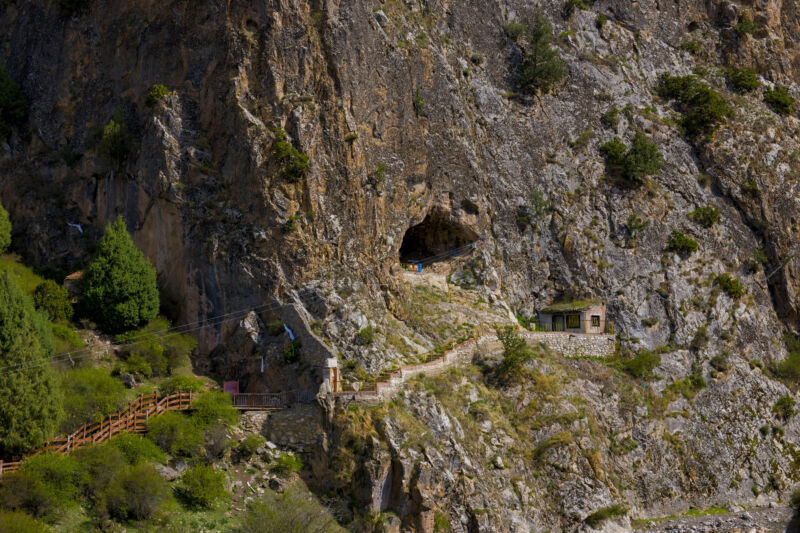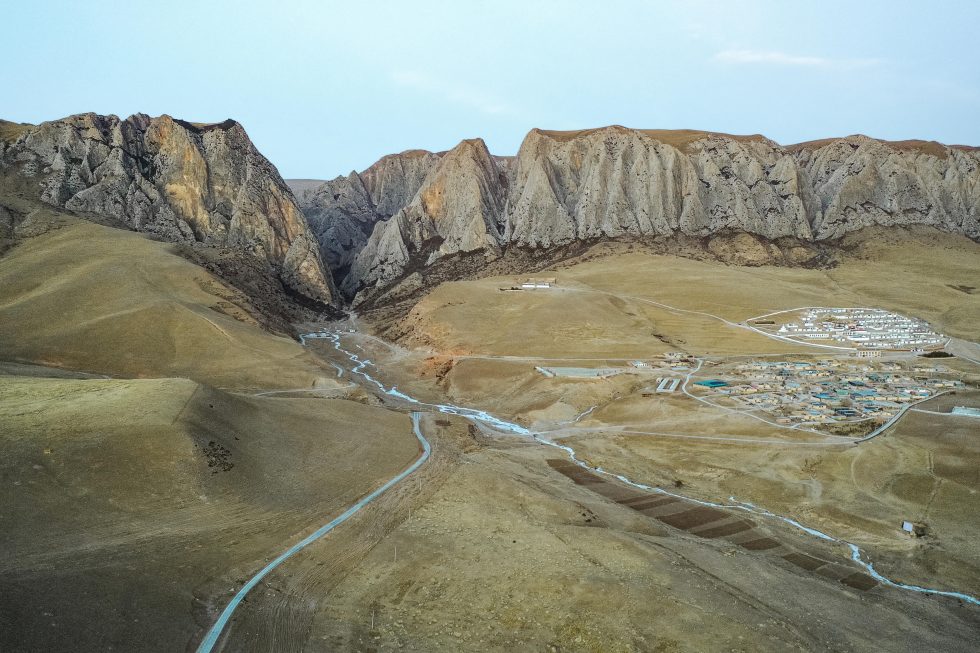Eating in —
Cave deposits yield bones of sheep, yaks, carnivores, and birds that were butchered.

Enlarge / The Baishiya Karst Cave, where the recently analyzed samples were obtained.
Dongju Zhang’s group (Lanzhou University)
For well over a century, we had the opportunity to study Neanderthals—their bones, the items they left behind, their distribution across Eurasia. So, when we finally obtained the sequence of their genome and discovered that we share a genetic legacy with them, it was easy to place the discoveries into context. In contrast, we had no idea Denisovans existed when sequencing DNA from a small finger bone revealed that yet another relative of modern humans had roamed Asia in the recent past.
Since then, we’ve learned little more. The frequency of their DNA in modern human populations suggest that they were likely concentrated in East Asia. But we’ve only discovered fragments of bone and a few teeth since then, so we can’t even make very informed guesses as to what they might have looked like. On Wednesday, an international group of researchers described finds from a cave on the Tibetan Plateau that had been occupied by Denisovans, which tell us a bit more about these relatives: what they ate. And that appears to be anything they could get their hands on.
The Baishiya Karst Cave
The finds come from a site called the Baishiya Karst Cave, which is perched on a cliff on the northeast of the Tibetan Plateau. It’s located at a high altitude (over 3,000 meters or nearly 11,000 feet) but borders a high open plain, as you can see in the picture below.
Oddly, it came to the attention of the paleontology community because the cave was a pilgrimage site for Tibetan monks, one of whom discovered a portion of a lower jaw that eventually was given to a university. There, people struggled to understand exactly how it fit with human populations until eventually analysis of proteins preserved within it indicated it belonged to a Denisovan. Now called the Xiahe mandible, it remains the most substantial Denisovan fossil we’ve discovered to date.

Enlarge / The Ganjia Basin borders the cliffs that contain the Baishiya Karst Cave.
Dongju Zhang’s group (Lanzhou University)
Since then, excavations at the site had turned up a large collection of animal bones, but none that had been identified as Denisovan. Sequencing of environmental DNA preserved in the cave, however, revealed that the Denisovans had occupied the cave regularly for at least 100,000 years, meaning they were surviving at altitude during both of the last two glacial cycles.
The new work focuses in on the bones, many of which are too fragmentary to be definitively assigned to a species. To do so, the researchers purified fragments of proteins from the bones, which contain large amounts of collagen. These fragments were then separated according to their mass, a technique called mass spectrometry, which works well even with the incredibly small volumes of proteins that survive over hundreds of thousands of years.
Mass spectrometry relies on the fact that there are only a limited number of combinations of amino acids—often only one—that will produce a protein fragment of a given mass. So, if the mass spectrometry finds a signal at that mass, you can compare the possible amino acid combinations that produce it to known collagen sequences to find matches. Some of these matches will end up being in places where collagens from different species have distinct sequences of amino acids, allowing you to determine what species the bone came from.
When used this way, the technique is termed zooarchaeology by mass spectrometry, or ZooMS. And, in the case of the work described in the new paper, it identified nearly 80 percent of the bone fragments that were tested.